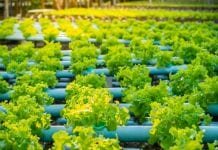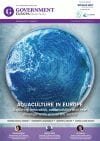
Researchers at the University of Portsmouth, UK and the US Department of Energy’s National Renewable Energy Laboratory (NREL) have engineered a plastic-eating enzyme which can digest some of our most commonly polluting plastics.
The discovery of the plastic-eating enzyme could result in a recycling solution that could provide a potential solution to the world’s environmental problems and complement the EU’s recently announced plastics strategy.
The enzyme could result in a solution for the millions of tonnes of plastic bottles, which are made of polyethylene terephthalate, or PET, that currently persist for hundreds of years in the environment.
Professor John McGeehan at the University of Portsmouth and Dr Gregg Beckham at NREL, solved the crystal structure of PETase—a recently discovered enzyme that digests PET— and used this 3D information to understand how it works.
During the study, which has been published in Proceedings of the National Academy of Sciences (PNSA), they inadvertently engineered an enzyme that is even better at degrading the plastic than the one that evolved in nature.
Improving the solution
The researchers are currently working on improving the plastic-eating enzyme further to allow it to be used industrially to break down plastics in much less time.
McGeehan said: “Few could have predicted that since plastics became popular in the 1960s huge plastic waste patches would be found floating in oceans or washed up on once pristine beaches all over the world.
“We can all play a significant part in dealing with the plastic problem, but the scientific community who ultimately created these ‘wonder-materials’, must now use all the technology at their disposal to develop real solutions.”
Determining PETs structure
PET, patented as a plastic in the 1940s, has not existed in nature for very long, so the researchers set out to determine how the enzyme evolved and if it might be possible to improve it.
The goal was to determine its structure, but they ended up going a step further and accidentally engineered the plastic-eating enzyme which was much better at breaking down PET plastics.
McGeehan said: “Although the improvement is modest, this unanticipated discovery suggests that there is room to further improve these enzymes, moving us closer to a recycling solution for the ever-growing mountain of discarded plastics.”
The research team can now apply the tools of protein engineering and evolution to continue to improve it.
Source: University of Portsmouth


















